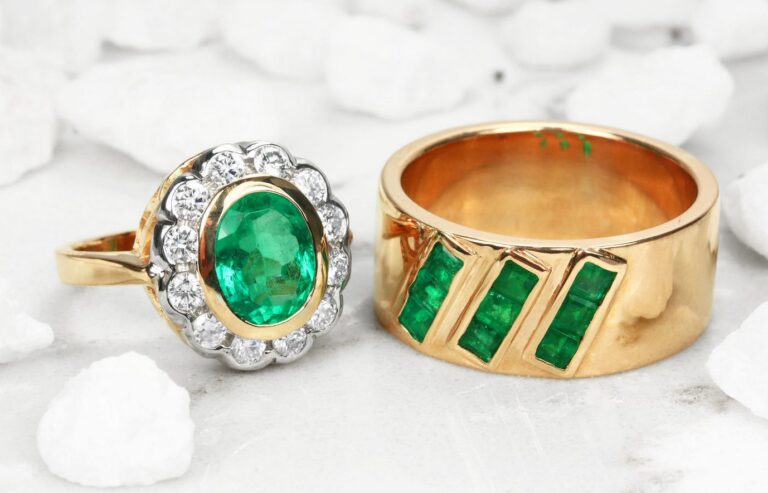Wedding bands are a symbol of a couple’s love and as such are incredibly personal. A wedding band is designed to last a lifetime, accompanying you on life’s journey, during which, it will encounter many ups and downs. It doesn’t seem too long ago when wedding bands were only worn by women, with the man often concerned if they would get damaged at work or even lost. Of course, the cost was also a factor, but for modern couples, both partners usually wear rings.
While many men still opt for a plain band, there has been a noticeable shift towards including gems in the wedding ring. A men’s emerald wedding band is now increasingly popular, portraying a sense of class and sophistication. Men tend to steer away from diamonds in wedding bands, primarily due to their association with the female’s ring and prefer to go for something which they feel is more masculine. Naturally, there are many things to consider when it comes to selecting a man’s wedding band and in this article; we will look at just a few factors.
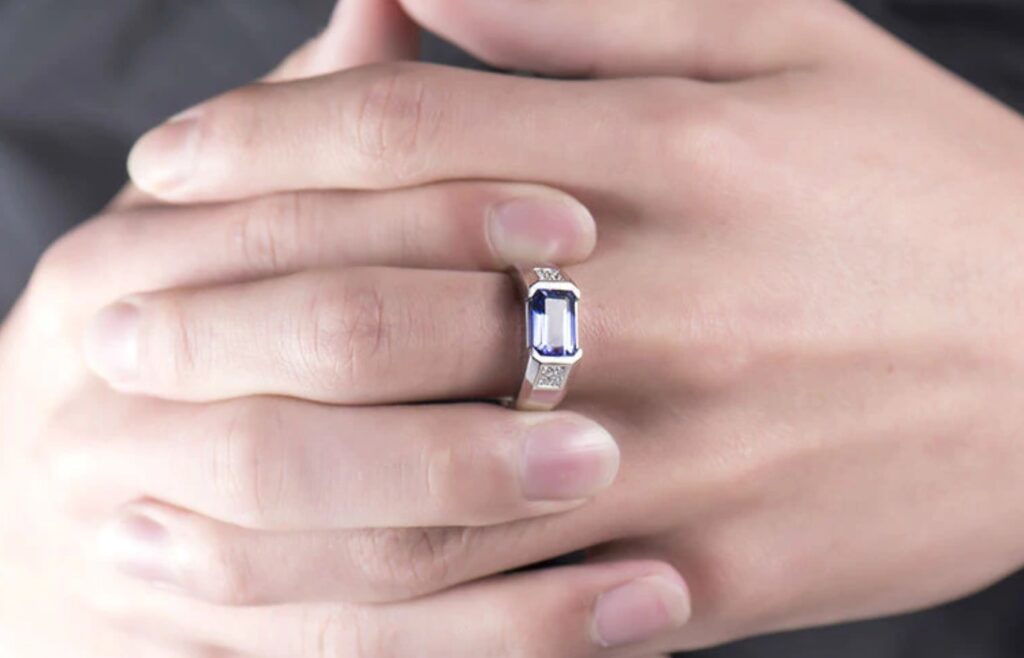
Gemstone set
Perhaps a decade or two ago, the idea of including a gemstone in a man’s wedding ring would have raised a few eyebrows, not to mention a few unsavoury comments. While diamonds are the hardest of the gemstones available, and well suited for men working in heavy industry, most males will select something that offers colour. Sapphires are also popular as they are available in a number of different colours, while others prefer to choose their birthstone.
However, in the last couple of years, it has been the emerald that has been the gem of choice. It is a stunning green, associated with masculinity, but still reflects the light and has a flattering shine. In can be set on the outside of the ring where it can be seen by all or it can be on the inside where it will be better protected and perhaps more private. Some couples believe that the inner setting reflects the intimacy and privacy within their relationship.
Factors to consider when considering including an emerald
You must think about the man’s lifestyle when deciding on an emerald. If the man leads an active lifestyle, you will need to consider a more robust setting for the stone to reduce the chances of it being lost or damaged. The internal setting may suit many men, especially those who are maybe more traditional in their values. The design of the ring, which we will come onto in a moment, may also be determined by lifestyle. However, different designs may not lend themselves to all gem settings.
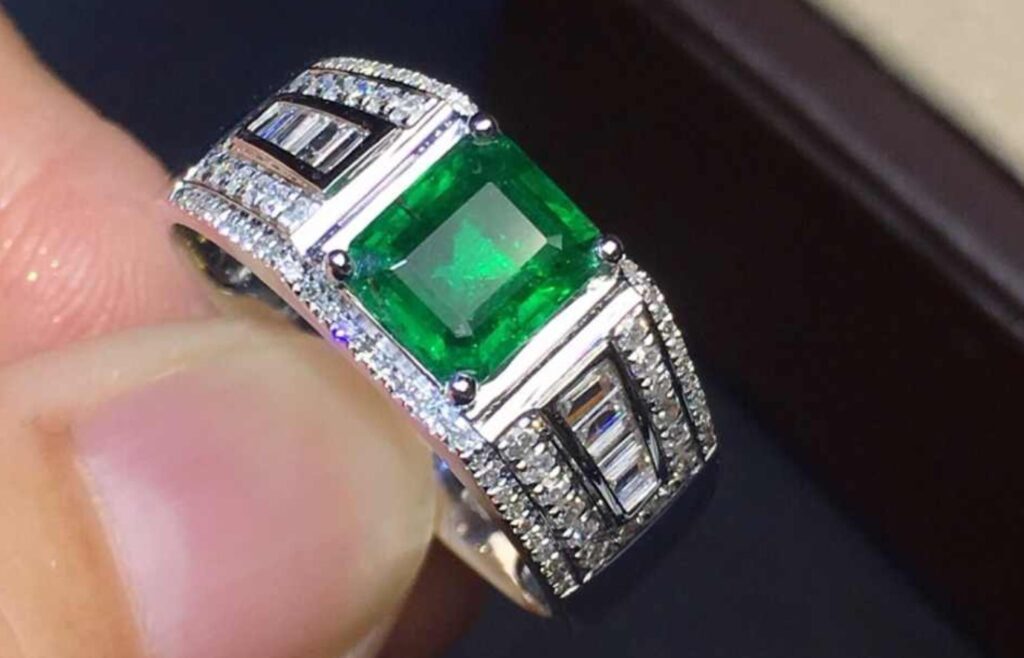
Ring designs
Men no longer need to choose a plain gold band. As mentioned, gemstones are more than acceptable as too are different colours and metals such as white gold and platinum. The bands also come in shapes that can flatter the finger, offer greater comfort or have less chance of getting damaged. Here are some different band designs.
Classic
The classic band is how most people would describe a ring, but in actual fact, they also include different profiles within the classic design. For men who place a heavy emphasis on comfort, court and D-shaped rings are popular and are suited for having gems inlaid on the inner ring. Flat and bevelled designs are viewed as “modern” and give a clean-cut image, and for those wishing to stand out from the crowd, they may choose knife-edge or concave.
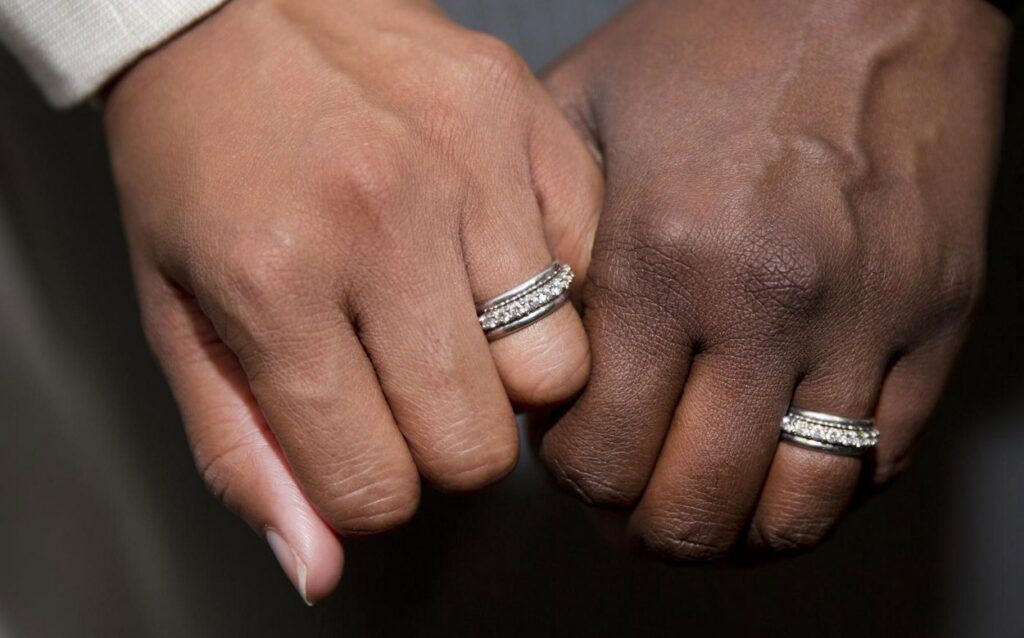
A more detailed look at band profiles
Court
The court profile is probably the most common of the ones used on men’s wedding bands and has a rounded curve edge on the inner and outer sides. It can be known as the “comfort-fit”, and this is quite apt. It can be challenging to affix gemstones to this profile.
D-shape
The D-shape has the same outer as the court but has a flat inner which does make it easier for stones to be set on the inside. It is well suited to active males and those that work with their hands.
Flat
The flat profile, as the name would suggest, has flat inner and outside sides. It is a design that lends itself well to the inclusion of stones on the inner or outer surfaces. The geometric design gives a sharp silhouette and is regarded as modern design.
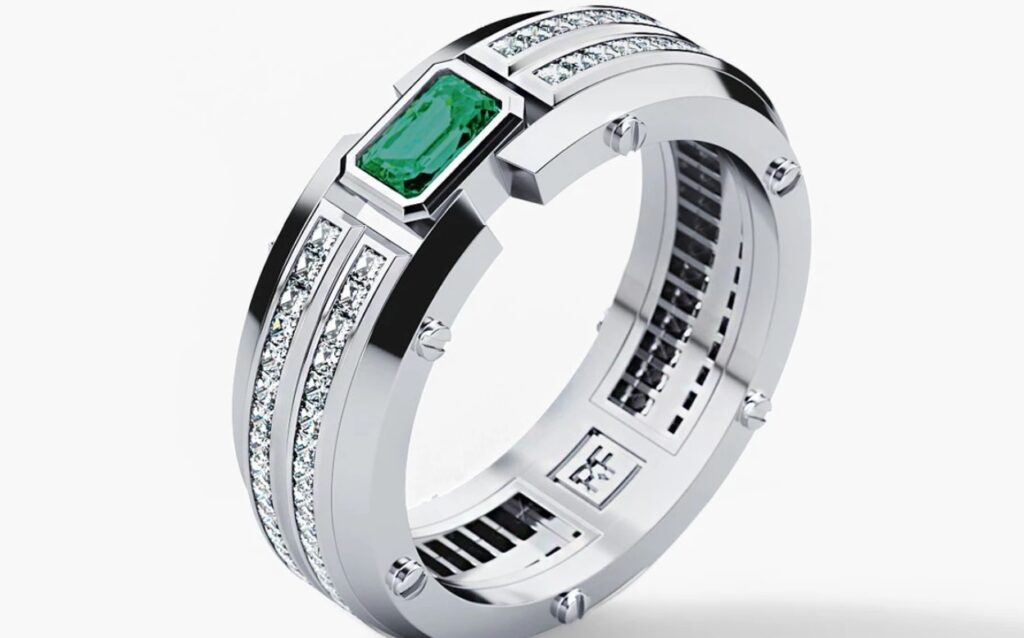
Bevelled
The bevelled design has a flat inner and an outer with sharper edges. Just like the D-shape, gemstones can easily be attached to the inner area of the band.
Knife-edge
The outer part of the ring has sharper features with the external centre of the ring rising to a peak. As such, it isn’t practical to fit emeralds or any other stone to the outside of the band.
Concave
A concave ring has a slightly dipped curvature on the exterior of the ring. Skilled jewellers can attach stones to this style of the ring, but they are more commonly kept plain.
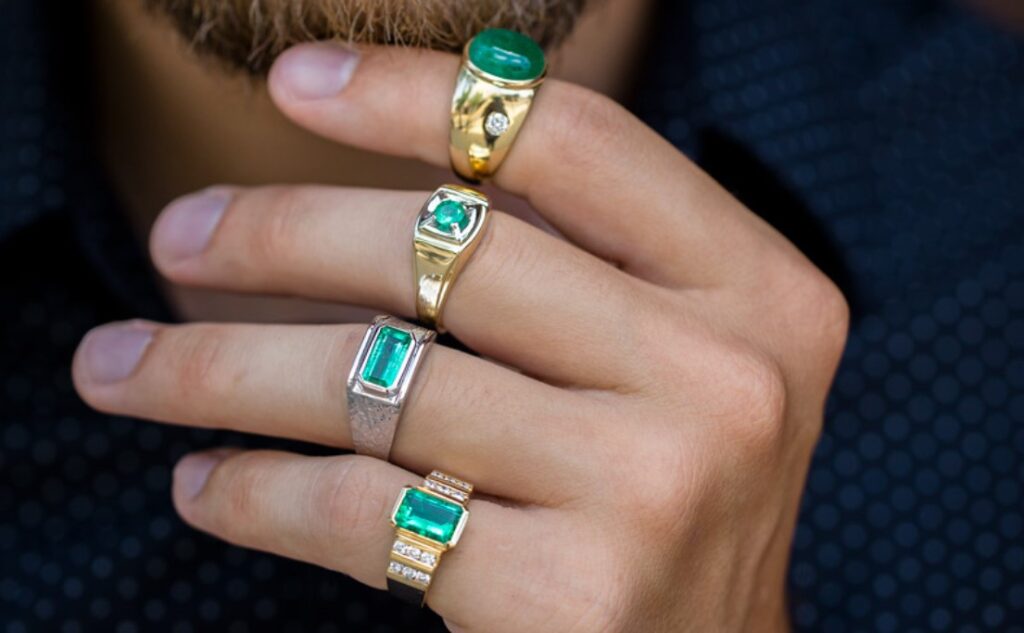
Different types of metal
Of course, the addition of gemstones has a huge impact on the appearance of the ring. However,perhaps to an equal degree, the same can also be said about the type of metal from which it is made. 18-carat gold is still the most popular but white gold, and platinum are increasingly popular with palladium and tungsten both commonly used. Visit ICONIC’s education page to learn more about precious metals.
Finishes
The finish to ring can also have a significant impact on its appearance. Men have always tended to edge away from highly polished finishes preferring satin, matte or even hammered effects. With the inclusion of stones, matte, satin and brushed finishes all look fantastic and can hide scratches and dents. Hammered finishes also hide any imperfections, but it doesn’t lend itself particularly well to the inclusion of gemstones, mostly if they are set on the exterior of the ring.
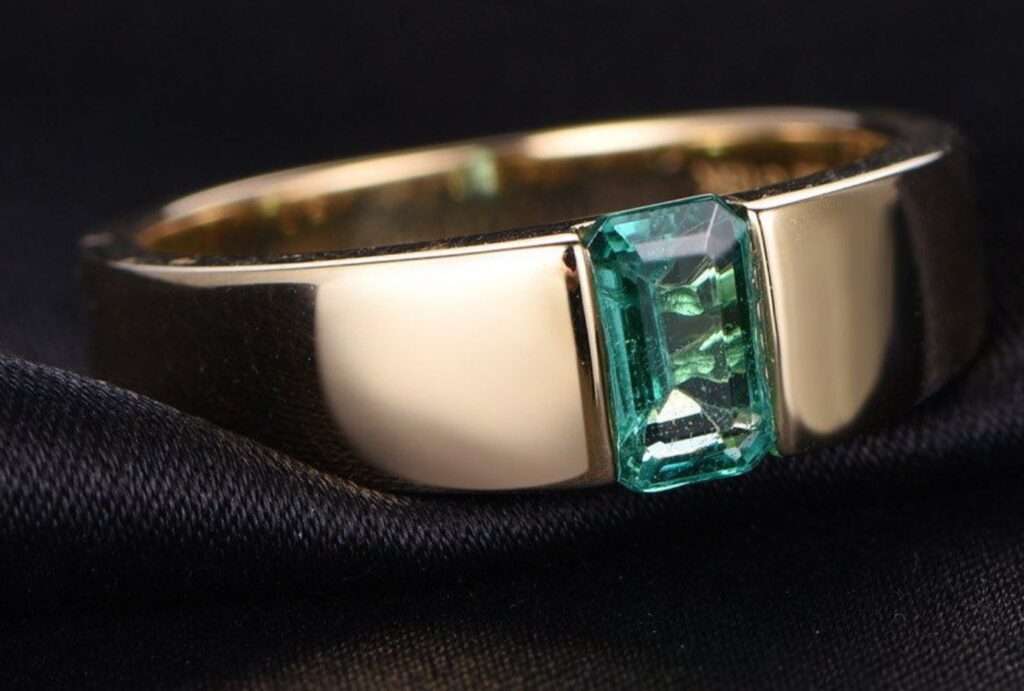
Engraving
Having your wedding band engraved is a popular addition for males and females alike and does add a personal touch. If you include writing on the inner of the ring, it can make it hard to include a gem due to lack of space.

